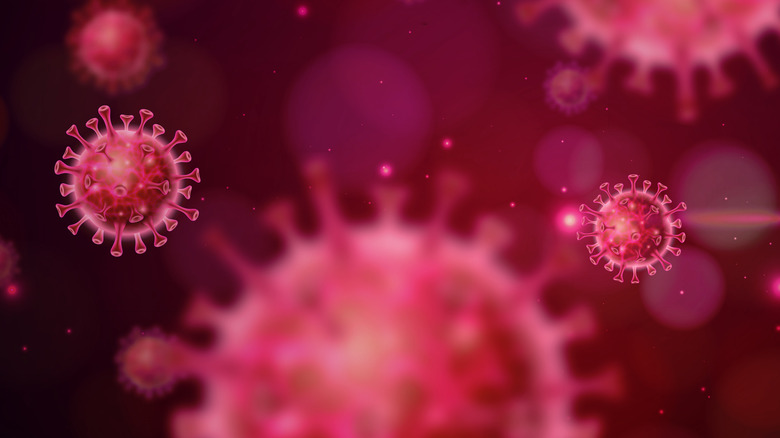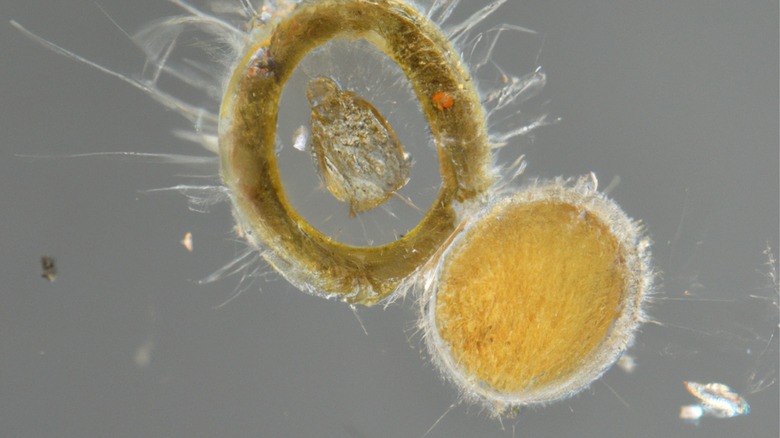Virovore: The Organism That Sustains Itself With Viruses
Vaccines have helped humans come a long way in our fight against viruses. But what if science could harness an organism that had the power to eat viruses? For now, that's just wishful thinking. According to a study published in late 2022 on PNAS, though, a previously unknown microbe called a "virovore" does just that. Newly defined, virovores sustain themselves by consuming viruses, just like all other living creatures survive by converting energy from other animals and plants.
The discovery of a virovore in the Halteria genus — a microscopic, single-celled ciliate that lives in freshwater — opens up the possibility that there are other microbes out there that possess the same ability to eat viruses. Indeed, there might be an entirely unknown food chain on planet Earth, where an estimated 10 nonillion(10 to the 31st power) viruses call their home, according to National Geographic. For virovores, a food source is always abundant.
Viruses make for a tasty treat
Of course, it's impossible to say what a virus tastes like, and virovore Halteria don't consume their food in the same way we do. But according to John DeLong at the University of Nebraska-Lincoln, who worked on the virovore study, viruses do make a good food source. "They're made up of really good stuff: nucleic acids, a lot of nitrogen and phosphorous ... Everything should want to eat them. So many things will eat anything they can get a hold of. Surely something would have learned how to eat these really good raw materials," DeLong said (via Eurekalert).
To reach their conclusions, DeLong and his colleagues added chlorovirus to pond water filled with microbes and watched what happened. What they found was that the number of one Halteria in particular (pictured above, consuming a virus) blossomed over time, while the amount of chlorovirus in the water plummeted. To be sure the Halteria was in fact consuming the chlorovirus, the DNA of the virus was filled with fluorescent dye, and sure enough, that same dye showed up inside the microbe. With no other food source available to it, it was confirmed that the Halteria was in fact a virovore. It not only ate viruses, but it also grew robust and healthy while doing it.
Virovores could balance carbon in the food chain
Among other notable advances brought about by the virovore study, Popular Science reports that virovory may affect carbon levels in the environment and the role carbon plays in the food chains. Chloroviruses infect algae, causing that algae to burst and release the carbon held within it back into the water. As associate professor John DeLong points out (via Eurekalert), "That's really just keeping carbon down in this sort of microbial soup layer, keeping grazers from taking energy up the food chain."
Once consumed by the virovore Halteria, the carbon stored inside the cholorovirus is then worked back into the food chain as larger organisms consume the ciliate. This helps balance carbon levels in the food chain via a type of natural carbon recycling. On that note, DeLong added (via Nebraska Today), "If you multiply a crude estimate of how many viruses there are, how many ciliates there are, and how much water there is, it comes out to this massive amount of energy movement." Also according to DeLong's research, an estimated 10 trillion viruses could be eaten in a single pond in a single day. Further research is planned to confirm the same virus-eating behaviors are seen in the wild and not just produced in the laboratory.


